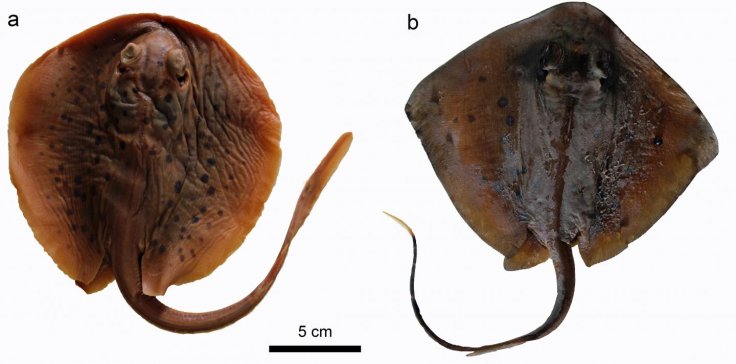
An international team of researchers, led by the Giuseppe Marramà from the Institute of Paleontology of the University of Vienna recently discovered a well preserved ancient fossil stingray with exceptional anatomy. This new finding not only has given new insights into the evolution mystery but also sheds lights into the recovery of the marine ecosystem after the great extinction.
It should be noted that Stingrays (Myliobatiformes) are known for their venomous and serrated tail stings, which they use against other predatory fish and occasionally against humans as a warning.
As per the physical characteristics they have the wing-like pectoral disc and a long, whip-like tail that carries one or more serrated and venomous stings.
It should be noted that these creatures include the biggest rays of the world like the gigantic manta rays, which can reach up to seven-meter in width.
Fossil remains of stingrays are very common, mostly their isolated teeth. But as of now, scientists have found some rare complete fossils of a few extinct species from these fossiliferous sites. It should be mentioned that among these, Monte Bolca, found in northeastern Italy, is one of the most popular fossil evidence.
As of now, over 230 species of fishes have been discovered that showed links to the tropical marine coastal environment, associated with coral reefs, dated back to about 50 million years ago in the period called Eocene.
But the scientists noticed that this new fossil has a flattened body and a pectoral disc ovoid in shape. But the shocking part was it had an extremely short tail, different from other stingrays, and does not protrude posteriorly to the disc.

Depending on the uniqueness of this creature, researchers named the new stingray Lessiniabatis enigmatic, which means "bizarre ray from Lessinia" (the Italian area where Bolca is located).
It should be mentioned that over 70 percent of the organisms, such as dinosaurs and marine reptiles, many mammal groups, numerous birds, fish and invertebrates -- disappeared from the earth during the mass extinction which happened 66-million-years ago.
The time after this event is characterized by the emergence and diversification of new species and animal groups of bony and cartilaginous fishes such as sharks and rays, which reoccupied the ecological position left vacant by other vanished creatures. These new species have learnt to experiment with new body plans as well as new ecological strategies.
In the study which was published in the journal Scientific Reports, Giuseppe Marramà said: "The emergence of a new body plan in a 50-million-year-old stingray such as Lessiniabatis enigmatic is particularly intriguing when viewed in the context of simultaneous, extensive diversification and emergence of new anatomical features within several fish groups, during the recovery of the life after the end-Cretaceous extinction event."









